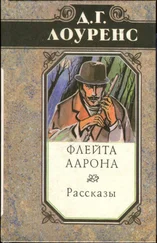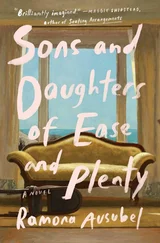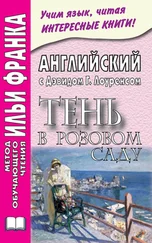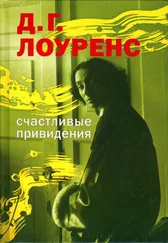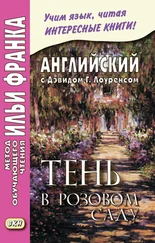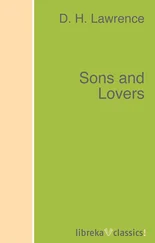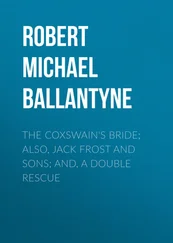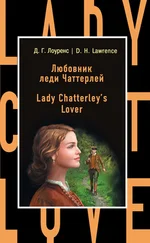Дэвид Лоуренс - Sons and Lovers
Здесь есть возможность читать онлайн «Дэвид Лоуренс - Sons and Lovers» весь текст электронной книги совершенно бесплатно (целиком полную версию без сокращений). В некоторых случаях можно слушать аудио, скачать через торрент в формате fb2 и присутствует краткое содержание. Жанр: Старинная литература, на английском языке. Описание произведения, (предисловие) а так же отзывы посетителей доступны на портале библиотеки ЛибКат.
- Название:Sons and Lovers
- Автор:
- Жанр:
- Год:неизвестен
- ISBN:нет данных
- Рейтинг книги:3 / 5. Голосов: 1
-
Избранное:Добавить в избранное
- Отзывы:
-
Ваша оценка:
- 60
- 1
- 2
- 3
- 4
- 5
Sons and Lovers: краткое содержание, описание и аннотация
Предлагаем к чтению аннотацию, описание, краткое содержание или предисловие (зависит от того, что написал сам автор книги «Sons and Lovers»). Если вы не нашли необходимую информацию о книге — напишите в комментариях, мы постараемся отыскать её.
Sons and Lovers — читать онлайн бесплатно полную книгу (весь текст) целиком
Ниже представлен текст книги, разбитый по страницам. Система сохранения места последней прочитанной страницы, позволяет с удобством читать онлайн бесплатно книгу «Sons and Lovers», без необходимости каждый раз заново искать на чём Вы остановились. Поставьте закладку, и сможете в любой момент перейти на страницу, на которой закончили чтение.
Интервал:
Закладка:
6 (p. 153) Oh, my son — my son: This is a reference to the Bible, 2 Samuel 18:33, where David mourns the death of his son Absalom. Paul Morel echoes the cry later in the book, “Oh, my love—my love.”
Chapter 7: Lad-and-Girl Love
1 (p. 159) a Walter Scott heroine: Scottish poet and novelist (1771-1832) Sir Walter Scott wrote in the Romantic period and specialized in complicated plots involving aristocratic lovers and Scottish peasants; see also note 1 in chapter 6.
2 (p. 159) Ediths, and Lucys ... Guy Mannerings: All are characters from the novels of Sir Walter Scott (see note above). Edith is from The Lord of the Isles (1815), Lucy Ashton from T he Bride of Lammermoor (1819), Rowenas and Brian de Bois Guilbert from Ivanhoe (1819), Rob Roy from Rob Roy (1817), and Guy Mannering from Guy Mannering (1815).
3 (p. 160) “Colomba,” or the “Voyage autour de ma Chambre”: French novelist Prosper Mérimée published the novel Colomba in 1841. (He also wrote Carmen, which was later turned into an opera by Georges Bizet.) Voyage autor de ma chambre is a novel by Xavier de Maistre (1763-1852).
4 (p.162) Skegness: D. H. Lawrence spent a month at Skegness, a resort town on the east coast of England, recuperating from his first attack of pneumonia in the winter of 1901-1902.
5 (p. 162) King Cophetua’s beggar-maid: According to legend, the African King Cophetua was impervious to love until he saw a beggar maid. He fell instantly under her charm and asked her to be his queen. The legend inspired the Pre-Raphaelite artist Sir Edward Burne-Jones to paint “King Cophetua and the Beggar Maid” (1884), which now hangs in the Tate Gallery in London.
6 (p. 164) the other cheek: The reference is to the Bible, Luke 6:29: “And unto him that smiteth thee on the one cheek offer also the other; and him that taketh away thy cloak forbid not to take thy coat also.”
7 (p. 167) tam-o‘-shanter: Originally, Scottish plowmen wore a cap known as the tam-o’-shanter, and it was later modified as a headdress for girls and young women. The tam-o‘-shanter as we know it is made of a soft wool with a flat top, and the circumference is about twice that of the headband.
8 (p. 169) It’s because ... is inside really : D. H. Lawrence describes the philosophy of the Impressionists, a late-nineteenth-century school of French painters who were concerned with the study of light and its refractions. Claude Monet, Auguste Renoir, and Paul Cezanne are perhaps the best-known painters of the group. Although the young Paul lacks the vocabulary and education to recognize a strain of Impressionism in his own art, he comes to it later (see page 329) Some critics have compared D. H. Lawrence’s prose style to that of an Impressionist painting.
9 (p. 169) ponder these sayings : In the Bible, Luke 2:19, Mary rejoices in the birth of Jesus. The angel has told the shepherds of the birth, and they spread news of the things the angel tells them. “But Mary kept all these things, and pondered them in her heart.”
10 (p. 170) Reynolds’s “Choir of Angels”: Sir Joshua Reynolds (1723-1792), an English portrait painter, was admired for his paintings of women and children done in the tradition of Van Dyck and Titian. This painting titled “Choir of Angels” was very popular and much reproduced.
11 (p. 171) women who went with Mary : The reference is to the Bible, Luke 24:1-10, in which Mary Magdalene and others find Jesus’ tomb empty.
12 (p. 175) nationalizing of the land: The debate over nationalization, or state ownership of industry and agriculture, began in Edwardian England, with socialists and radicals calling for state control of coal, railways, and land. The issue was much debated at the turn of the century because many small farms were economically threatened by the inexpensive grain imported from the United States. The movement reached its height after 1945 and came to a stop with Margaret Thatcher’s government (1979-1987).
13 (p. 178) gaby: See page 49 for alternate spelling, “gabey.” This is a term for a fool, or simpleton.
14 (p. 180) Hemlock Stone: This irregularly shaped mass of red sandstone is one of the most famous landmarks in the British Midlands. While the Hemlock Stone has often been linked to the Druids, who built similar stone monuments throughout Britain, geologists now say the formation is entirely natural.
15 (p. 184) “annunciation”: In the Bible, Luke 1:26-38, the Angel Gabriel comes to Mary and announces that she will be the mother of Jesus.
16 (p. 185) letters of the law: The reference is to the Ten Commandments, which God delivers to Moses in the Bible, Exodus 20:1-26.
17 (p. 185) Bank Holiday crowd: Bank holidays are days on which the banks of Britain close, and are the equivalent to public holidays in the United States. Most workers in both the public and private sectors have Bank holidays off.
18 . (p. 186) Mary Queen of Scots : Mary Stuart (1542-1587), Queen of Scotland, was imprisoned several times, for her belief in Roman Catholicism and other misdeeds, in Wingfield Manor. She was eventually beheaded.
19 (p. 187) Crich Stand: The reference is to a well-known signal beacon that stood atop a hill outside the village of Crich in Derbyshire.
20 (p. 188) Veronese’s “St. Catherine”: Paolo Veronese (1528-1588) was an Italian painter of the Venetian School who specialized in large, detailed, and brightly colored paintings, almost always of religious themes. Saint Catherine is the patron saint of girls.
21 (p. 189) But there was a serpent in her Eden: This is a reference to the Bible, Genesis 3:1-6, in which the devil takes the form of a snake and enters the Garden of Eden to tempt Eve with the forbidden apple.
22 (p. 190) who died for the souls of men : It is a fundamental Christian belief that the Lord sacrificed his one son in order to save the eternal souls of mortal men. D. H. Lawrence concentrated much of his intellectual energies on questions of religion. In his later life, he became interested in primitive religions.
23 (p. 193) Jean Ingelow: The works of this immensely popular English poet and novelist (1820-1897) include her long poem “High Tide on the Coast of Lincolnshire, 1571.”The poem recounts a historic incident in which high tides flood the North Sea coast. Although the mayor of the town of Boston climbs the belfry tower to ring a warning peal across the land—“Play uppe, play uppe,” he commands—a young woman named Elizabeth drowns and is found “floating o’er the grassy sea.” The poem inspired an equally popular song.
24 (p. 194) “ The Flowers o‘the Forest”: Jane Elliot (1727-1805), a member of a famous Scottish clan, wrote this popular ballad lamenting the Battle of Flodden (1513), in which as many as 10,000 Scots died at the hands of the English.
25 (p. 195) “Coons”: This is a reference to the performances in which white singers dressed as blacks. Such productions originated in America around 1840 and soon became a popular family entertainment in Britain.
26 (p. 196) some sad Botticelli angel: Sandro Botticelli (1444?-1510), an Italian painter, depicted religious and mythological subjects in a decorative style with extreme attention to detail and fine, idealized forms. Paul later compares Miriam to a Botticelli Madonna (see page 306).
27 (p. 196) Norman arches : Norman arches, also referred to as Romanesque, were built from the eleventh to the thirteenth centuries and have rounded tops.
Читать дальшеИнтервал:
Закладка:
Похожие книги на «Sons and Lovers»
Представляем Вашему вниманию похожие книги на «Sons and Lovers» списком для выбора. Мы отобрали схожую по названию и смыслу литературу в надежде предоставить читателям больше вариантов отыскать новые, интересные, ещё непрочитанные произведения.
Обсуждение, отзывы о книге «Sons and Lovers» и просто собственные мнения читателей. Оставьте ваши комментарии, напишите, что Вы думаете о произведении, его смысле или главных героях. Укажите что конкретно понравилось, а что нет, и почему Вы так считаете.


